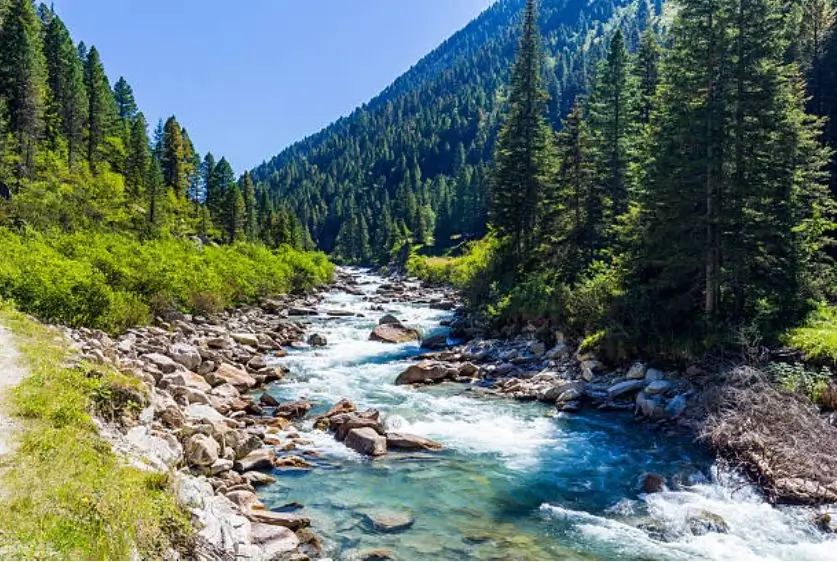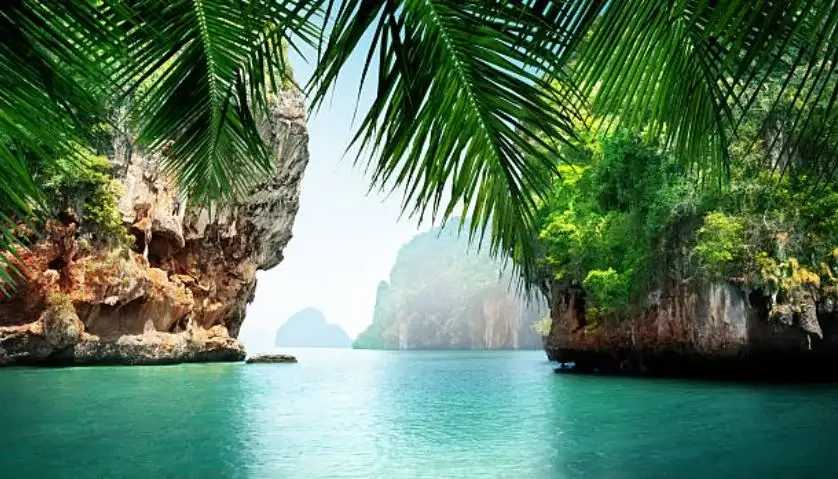Introduction To The Natural Environment : Nature has been known to be a critical factor in the support of life on the planet. It supplies air to breathe as well as water for drinking and food to eat for human beings and other animals. Conservation of ecosystems entails preserving a healthy environment which will enhance the growth of the various species found in ecosystems.
Importance Of Natural Environment
Without it, survival becomes difficult. Environmental problems such as pollution and deforestation are the cause of instability on the planet. The knowledge of the importance of these natural resources enables one to prevent their degradation. This paper aims to discuss the importance of the natural environment and its relation to our lives.
i) Provides Clean Air:

It is a known fact that trees and plants help to clean the air. They also participate in the removal of carbon dioxide gas from the air while emitting oxygen in the process. This contributes to the fresh air needed for breathing because of the entry of fresh air into the house.
Air pollution causes respiratory illness We know very well that polluted air is a major factor that causes respiratory diseases. The natural environment plays an important role in the reduction of air pollution by afforestation and inclusion of green vegetation.
In urban areas, there is less tree cover and as such, the air quality in such regions is bad. It is well established that clean air enhances the condition of the population’s health as well as increases efficiency levels across nations.
Thus, society needs to embrace the protection of trees since they help provide fresh air. Measures such as emission control help in maintaining a good ambiance in the environment.
ii) Supplies Fresh Water:

Water is essential for survival. One of the natural processes under natural environment control is a hydrological cycle. Through water filtration and storage, forested and/or wetland barriers aid in the filtering and storage of water. Rainwater replenishes rivers and lakes. It polluted the water and any human, animal, plant and even a life form that managed to cross it was in danger.
Particularly, it is important in meeting the cultivation water needs apart from assuming the human need for drinking and other domestic uses of water. Therefore, deforestation affects the hydrological cycle and droughts are formed in this way.
Additionally, it means controlling pollution and protecting forested areas go a long way to guaranteeing the supply of fresh water. Nowadays it is important to solve such a problem because it is being used in the future generations as water resource sustainability.
iii) Supports Biodiversity:
However, the idea of biodiversity is not only about single plants, and single animals, but also Microorganisms. The natural environment acts as a habitat for any species in existence. They have all their function in sustaining the ecosystem balance. This understanding was that if the rates of species diversity decline, then there is a rate decline in the fragmentation of food chains.
Forests are being cut and the air, water, and soil are being polluted, which challenges the existence of species. Conservation efforts protect wildlife. Environmental health has benefits such as improving fertility in some soils as well as enhancing the pollination of crops. A diverse environment ensures sustainability. Preserving ecosystems and minimizing people’s effects preserve the threatened species.
iv) Controls Climate:
The natural environment regulates climate. The greenhouse gases are taken out of restricted which slows down the adverse effects of global warming. Oceans also help them absorb and distribute heat, as well as cause their weather conditions. The fact that climate change leads to very extreme site conditions is well known.
Deforestation increases carbon dioxide levels. Specifically, the increase in temperature worsens these factors as they affect agriculture and water resources.
Sustainable practices reduce carbon footprints. The best method of fighting climate change is to plant trees or to adopt renewable energy. Moderation will give an environment stability of the weather prevalent in that environment.
v) Improves Mental Health:
Nature positively impacts mental health. On this account, green spaces are used as a tool to eliminate stress and fear. From these environments where people can exist, it can be safely stated that the natural environment is good for relaxation and for increasing well-being.
Leaders-to-nature contact, for a longer period of time, brings to the mood and innovativeness. Because it is possible that people who will live in an urban region will have a culture of doing outdoor exercises too in such an environment. Pollution and deforestation limit access to green spaces.
Preserving nature supports mental health. That is because of the happiness of walking in forests or next to water bodies. Good for one’s health, it is the conservation of nature that brings out physical and mental health. Needs conservation to keep agriculture in check

Thus it is alarming that the environment begins to show symptoms of drastic change in many respects. Some of the factors such as soil fertility, pollination, and water supply also influence crop growth. It uses high levels of such factors as deforestation and pollution to destroy soil.
The pollinators in question, however, are these two pollinators, which really help improve agricultural production, particularly pollinators such as bees. Climate change impacts farming patterns. Sustainable farming technology conserves the type of soil and bio-diversity.
Organic farming reduces chemical use. The paper concludes that the preservation of forests and rivers is complementary to improving the production of agriculture. Observation of the four principles of a healthy environment entails food security for the population.
vi) Provides Natural Resources:
It is also worth noting that nature offers us enormous resources and supplies. This time it is the case of wooden furniture, Minerals, and Herbal medicines, which are some products obtained from natural resources. Therefore, these resources sustain industries and economies in this capacity. Overexploitation depletes natural reserves.
Such sustainable resource management will sustain the resource so that the resource may be used without depleting the resource at any time in the near future. Recycling and conservation thus have the effects and potential of sparing a few of the misdeeds on the environment. As regards environmental preservation, we have to note that preserving forests and the sea is to protect the resources. Responsible consumption minimizes waste. If resource use is offset by resource conservation, then only the sustainable use of resources is possible.
vii) Prevents Natural Disasters:
Whatever the natural disaster is, the natural environment has minimal effects on natural disasters provided it is considered to be in a healthy state. For example, forests have some of the importance of acting as protection of the slopes against of soil erosion and landslides. They may be employed to deal with the problem of floods by the fact that they absorb rainwater.
Mangroves also have some significant benefits in saving the coastal areas from the storms. Deforestation increases disaster risks. A changed climate makes hurricanes and other events more severe, including droughts.
Protecting ecosystems strengthens disaster resilience. The use of land checkers in the sustainable use of land will in turn diminish adverse impacts on the environment. The effects of disaster management costs in the future may be decreased by conserving money. A stable environment safeguards communities.
viii) Supports Economic Growth:
Indeed, the economy is tied in with the natural environment. Nature serves as the only base for tourism, agriculture, and most certainly forestry. These visitors and tourism businesses of national parks will form a basis for jobs in the parks. Fishing and farming support livelihoods. Environmental damage affects industries.
In the words sustainable development, is the relationship between a given economy’s development and its ability to preserve natural resources within the same economy. These industries lead to the direct employment of people in the generation of clean energy.
As with most of the tourism, it has also been having a positive influence on the natural resources and the country’s economy. It is therefore understandable why, to preserve nature, it is essential to encourage the economic stability of the nation in the long run so that it can be planned for.
Conclusion:
Unlike milk bottles, the natural environment is necessary for our life continuation, a fact that doesn’t need to be stressed anymore. It releases fresh and clean air, water, and food for people or fresh produce for people living near farms. Botswana’s wildlife conservation is supported by the government and then the climate is moderated. We all know that nature is therapeutic towards humans, as well as helps prevent disaster.
It is good to note that the well-being of the environment leads to economic development. Protecting it is our responsibility. Sustainable practices help maintain balance. Conservation efforts secure future generations.
Awareness of the implications increases the chances of its proper management. It is only natural that if you have a vibrant natural environment, then all a person stands to benefit from



